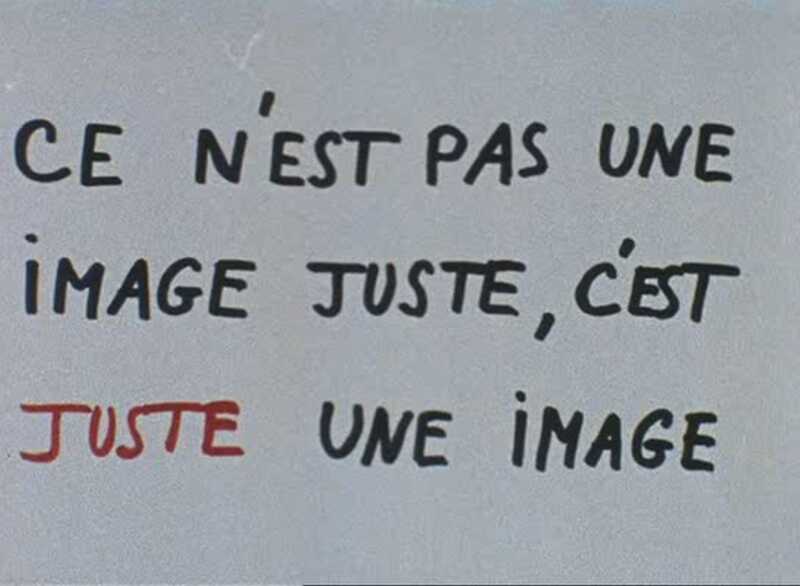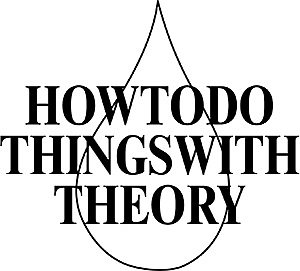2023-2024 Ghalya Saadawi's seminar: Counter, Revolution, Film
The seminar is conceived and offered by Ghalya Saadawi
The seminar from Confluence to Confluence
Seminar participants second year: Clara von Schantz, Julia von Schantz, Daniël van der Giessen, Thamyres VM, Claudia Medeiros Cardoso, Seán Bean and Ania Yilmaz.
Seminar participants first year: Alva Roselius, Clara Rudin Smith, Qiaoling Cai and Sam Mountford.
Counter, Revolution, Film
INTRODUCTION:
How long have we been living in counterrevolutionary times? In the modern counterrevolutionary centuries (20th and 21st) there are different names for counterinsurgency across the scenes of cold war, coups, new and late fascisms, post-revolutionary authoritarian counterrevolutions, preemptive terror wars, and the form of plain old liberal democracy. In fact, capitalism continues to perfect its counterrevolutionary skills. There are interconnected ways this occurs via an accumulative, propertied bloodline. A. Toscano after W. E. B. Du Bois calls it “the counter-revolution of property” in introducing late fascism, contiguous with capitalism and colonialism. One that also works hard to ideologically and practically obscure the foundations of its historical arc, even as it makes clear its intentions. These bloodlines are connected through various contorted military and mediatic techniques such as criminalizing, incarcerating, making disappear, dehumanizing, massacring, as well as espionage and propaganda to name but a few. The counterrevolution also accomplishes its aims through using peace and human rights.
The struggles they seek and sought to quash themselves also took on multiple modes of commitment to resistance including film: Fiction feature, newsreel, found footage, documentary, and so on, or what K. Eshun and R. Gray call the militant image in the context of revolutions, as well as liberation struggles. What is the role of film in class struggle and insurgency? How does it usurp the conventional modes of ethnographic documentary and its colonial gaze, or the Hollywood narrative film? It asks, what is the relation between sound and image? What is the place of the filmmaker? What of representation and realism? Films themselves directly and indirectly around the slogan of making political films, and of making them politically. We saw the importance of the Maoist emphasis on contradictions in culture and class struggle; the emergence of cinéma engagé and Third Cinema (including its revision in the 90s to include cinema after decolonization).
In the aftermath of the rationalized extermination and nuclear logic of WW2, in the context of subsequent anti-colonial struggle, workers struggle, black liberation struggle, Latin American revolutions and coups, Palestine, the war on Vietnam, the McCarthy war on communism, and the long 20th century ending with the fall of existing socialism, the stakes of thinking culture and revolt, were, to say the least, very high.
Film has been the scene of political praxis and critique, one could argue, since the invention of the camera for the moving image, and onwards to the time of its so-called democratization, from the Lumiere Brothers to Kino Eye and beyond. Questions regarding form and content broadly framed around social realism and modernism, bulleted film and documentary filmmaking and scholarship, and crystallized around various points of contention: montage, image, sound and text, archival footage, realism, the camera as arms in aims and means of the revolution.
As we are unable to enter into the full philosophical quagmire of mid- and late 20th century debates around politics and aesthetics, we add here that there were evidently major splits in considering the path of filming the revolution and counterrevolution, your own or that of others, the forms through which to do so, or not filming it at all. And whether the apparatus of the camera and its attendant machinations were understood as a weapon (a means to an ends), as a medium of representation, as a formal language, as an ideological hindrance, or ignored altogether.
We will watch films in order to begin engaging with the terrain film and the struggles of oppressed peoples in concordance with an always brutal counterrevolution, which in some sense both produces the fervour of the former and fights to annihilate what freedom it fights for. We can learn something about the then to think something concrete and transformative about the now. Or, let the image puncture the image of now.
The course proposes possible sessions such as the criminalization of the Black Panther Party with the counterrevolution against communists in the USA; Algeria’s anti-colonial war and the FLN; La Commune de Paris; The Brixton riots, racism and class warfare in the UK; Palestine and its long resistance; Third cinema via Latin America and Cuba; humanitarian violence, 9/11, surveillance and counterterrorism.
Extended reading list:
Aaron J. Leonard, and Connor A. Gallagher. Heavy Radicals: The FBI's Secret War on America's Maoists. London: Zero Books, 2015.
Adorno, T.W. “Commitment.” In The Essential Frankfurt School Reader. Edited by Andrew Arato and Eike Gebhardt, 300-318. New York: Continuum, 1998..
Alter, Nora. “The Political Im/perceptible in the Essay Film: Farocki’s ‘Images of the World and Inscriptions of War’.” New German Critique 68 (1996): 165–192.
Baumann, Stefanie (2021). "Images of the Real: Introductory Notes 1." Cinema Journal of Philosophy and the Moving Image 12 (2021): 8-21.
Benjamin, Walter. The Work of Art in the Age of Its Technological Reproducibility, and Other Writings on Media. Edited by Michael W. Jennings, Brigid Doherty and Thomas Y. Levin. Cambridge: Belknap Press of Harvard University Press, 2008.
Bevins, Vincent. The Jakarta Method: Washington's Anticommunist Crusade and the Mass Murder Program that Shaped Our World. New York: Public Affairs, 2020.
Davis, Angela. If They Come in the Morning…: Voices of Resistance. London: Verso, 2016.
Eshun, Kodwo, and Ros Gray, (eds).”The Militant Image: A Ciné‐Geography. Editors’ Introduction.” Third Text, 25, no. 1 (2011): 1-12.
Fanon, Frantz. The Wretched of the Earth. Translated by Constance Farrington. London: Penguin, 1963.
Harvey, Sylvia. “Whose Brecht? Memories for the Eighties.” Screen 23, no. 1 (1982): 45-59.
Khalili, Laleh. Time in the Shadows: Confinement in Counterinsurgencies. Stanford: Standford University Press, 2012.
James, CLR. “They Showed the Way to Labor Emancipation: On Karl Marx and the 75th Anniversary of the Paris Commune,” Labor Action Newspaper of the Workers Party of the United States (March 18, 1946). Last accessed November 12, 2023 https://libcom.org/article/karl-marx-and-paris-commune-clr-james.
de Laurot, Edouard. “Composing as the Praxis of Revolution: The Third World and the USA.” Third Text 25, no. 1 (2011): 67-91.
Lorde, Audre. “Apartheid U.S.A.” In I Am Your Sister: Collected and Unpublished Writings of Audre Lorde. Edited by Rudolph B. Byrd, Johnetta Betsch Cole and Beverly Guy-Sheftall. Oxford: Oxford University Press, 2009.
Marx, Karl. “The Paris Commune.” In The Civil War in France. (1871). Last accessed November 3, 2023 https://www.marxists.org/archive/marx/works/1871/civil-war-france/ch05.htm
Meister, Robert. After Evil: The Politics of Human Rights. New York: Columbia University Press, 2021.
Minh-Ha, Trinh T. “Documentary Is/Not a Name.” October 52 (1990): 76-98.
Mokhtefi, Elaine. Algiers Third World Capital: Freedom Fighters, Revolutionaries, Black Panthers. London: Verso Books 2022.
Nichols, Bill. Speaking Truths with Film. Evidence, Ethics, Politics in Documentary. Oakland: University of California Press, 2016.
Rabinowitz, Paula. They Must Be Represented: The Politics of Documentary. London: Verso, 2004.
Rodowick, D. N. The Crisis of Political Modernism: Criticism and Ideology in Contemporary Film Criticism. Oakland: University of California Press, 1995.
Ross, Kristin. Communal Luxury: The Political Imaginary of the Paris Commune. London and New York: Verso, 2016.
Toscano, Alberto. Late Facscism. London and New York: Verso, 2023.
Whyte, Jessica. The Morals of the Market: Human Rights and the Rise of Neoliberalism. London and New York: Verso, 2019.
Extended film list:
Solanas and Getino, The Hour of the Furnaces (1973)
Gilles Pontecorvo, La Bataille d’Algers (1966)
John Frankenheimer, The Manchurian Candidate (1962)
Stanley Kubrik, Doctor Strangleove (1964)
Don Siegel, Invasion of the Body Snatchers (1956)
Thom Andersen, Red Hollywood (1996)
Barbet Schroeder, The Devil’s Advocate (2007)
Black Audio Film Collective, Handsworth Song (1986)
Mustafa Abu Ali, several
Kassem Hawal, Return to Haifa (1982)
Tokyo Reels
Ivens, Marker, Klein, Resnais, Varda, Godard, Lelouch, Loin du Vietnam (1967)
Joshua Oppenheimer, The Act of Killing (2011)
Chris Marker, Level 5 (1999) and La Jetée (1966)
JL Godard, Anne Marie Mieville and JP Gorin, Içi et Ailleurs and Notre Musique
Godard, La Chinoise (1967)
Steve McQueen, Small Axe: Mangrove (2022)
Peter Watkins, La Commune (2002)
Sarah Gomez, One Way or Another (1974)
Wes Hondo, West Indies: The Fugitive Slaves of Liberty (1979)
Dziga Vertov, Man with a Movie Camera (1925)
Sergei Eisenstein, Battleship Potemkin (1925) or Ten Days that Shook the World (1928)
Harun Farocki Workers Leaving the Factory (1995)
Flora Gomes and Diana Andringa The Two Faces of War (2000)
Sarah Maldoror (1969) Monangambee
Trinh T. Minh-ha (1983) Reassemblage: From the Firelight to the Screen
Laura Poitras, Citizenfour (2014)


